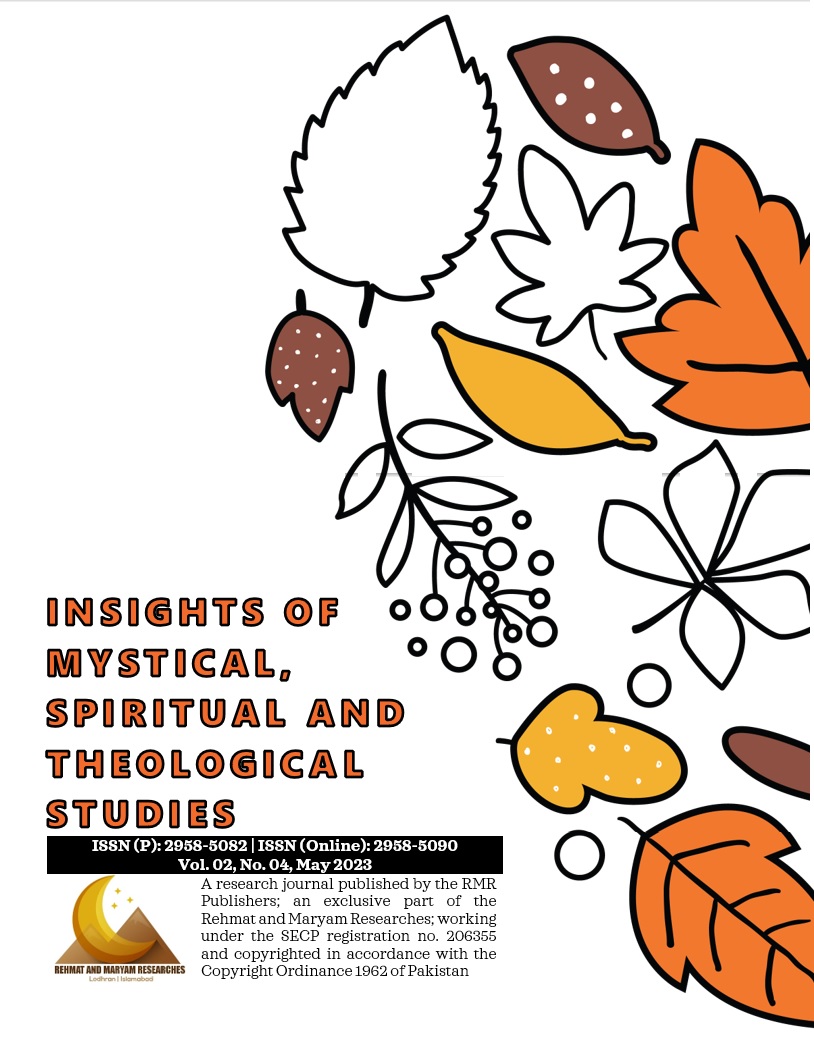Religious Practices and their Impact on Mental Health: A Study of South Khorasan Province in Iran
Keywords:
Statistical Center of Iran, Zoroastrians, Law-Abiding Individuals, Afghan Diaspora, General Health Questionnaire, Ervand AbrahamianAbstract
This research paper explores the relationship between religious practices and mental health in South Khorasan Province, Iran. The study aims to investigate whether there is a significant correlation between religiosity and mental health in the region. To conduct this research, a mixed-methods approach was used, including both qualitative and quantitative data collection methods. A total of 250 participants were selected through a random sampling technique, and data were collected through self-report measures, including the General Health Questionnaire (GHQ-28) and a questionnaire on religious practices. The results indicate a significant positive correlation between religiosity and mental health, suggesting that individuals who reported higher levels of religious practices also reported better mental health. The study also explored the specific religious practices that have a significant impact on mental health, including daily prayer, fasting, and attending religious ceremonies. The findings of this study have important implications for mental health professionals in Iran and may help promote the integration of religious practices into mental health interventions.
References
Asim, D. M. (2023, March 31). Demographics of South Khorasan Province. (S. Ullah, Interviewer)
Aljazeera. (2022, February 15). Iran: Three soldiers killed in attack in southeast. Retrieved from https://www.aljazeera.com/news/2022/2/15/iran-three-soldiers-killed-in-attack-in-southeast
Dehshiri, G. R., Omidi, A., & Zare, H. (2010). Religious orientation, social support, and mental health among students. Journal of Religion and Health, 49(3), 388-395. https://doi.org/10.1007/s10943-009-9247-6
Ellison, C. G., & Levin, J. S. (1998). The religion-health connection: Evidence, theory, and future directions. Health Education & Behavior, 25(6), 700-720. https://doi.org/10.1177/109019819802500601
Farhad, A., & Asim, D. M. (2023, April 14). Mental health is a critical aspect of overall well-being, and it is a growing concern in Iran. The Iranian government has taken some steps to address this issue by establishing a national mental health program to improve mental health services and increas. Retrieved from Pak-Iran Intellectuals Forum: https://pakiranintellectualsforum.wordpress.com/2023/04/14/addressing-the-growing-concern-of-mental-health-in-iran-progress-challenges-and-the-impact-of-covid-19-in-south-khorasan-province/
Fowler, J. W. (2000). Therapeutic effects of faith healing and energy healing. In L. G. Underwood (Ed.), Handbook of religious coping: Theory, research, and practice (pp. 362-376). Guilford Press.
Koenig, H. G. (2012). Religion, spirituality, and health: The research and clinical implications. ISRN Psychiatry, 2012, 1-33. https://doi.org/10.5402/2012/278730
Mardani, A., Tabatabaei, S. M. H., & Yazdani, S. (2021). Analysis of the Immigration of Afghan Citizens to Iran: Security, Political, and Economic Implications. Journal of Social and Political Sciences, 4(3), 788-797.
Naeem, F., Gire, N., Zaman, M., Nasar, A., Phiri, Z., Munshi, T., & Ayub, M. (2016). Association of religious practices and mental health among medical students in Pakistan. Journal of Religion and Health, 55(6), 1931-1940. https://doi.org/10.1007/s10943-016-0189-x
Niazi, A., Sajjadi, S. A., & Pridham, B. (2021). Iranian Policies Toward Afghan Immigrants in Iran. Journal of Immigrant & Refugee Studies, 19(2), 199-216. doi: 10.1080/15562948.2020.1838183
Pargament, K. I. (1997). The psychology of religion and coping: Theory, research, and practice. Guilford Press.
Steger, M. F. (2012). Experiencing meaning in life: Optimal functioning at the nexus of well-being, psychopathology, and spirituality. In P. T. P. Wong (Ed.), The human quest for meaning: Theories, research, and applications (pp. 165-184). Routledge.
Downloads
Published
How to Cite
Issue
Section
Categories
License
Copyright (c) 2023 Insights of Mystical, Spiritual and Theological Studies

This work is licensed under a Creative Commons Attribution-NonCommercial-NoDerivatives 4.0 International License.

